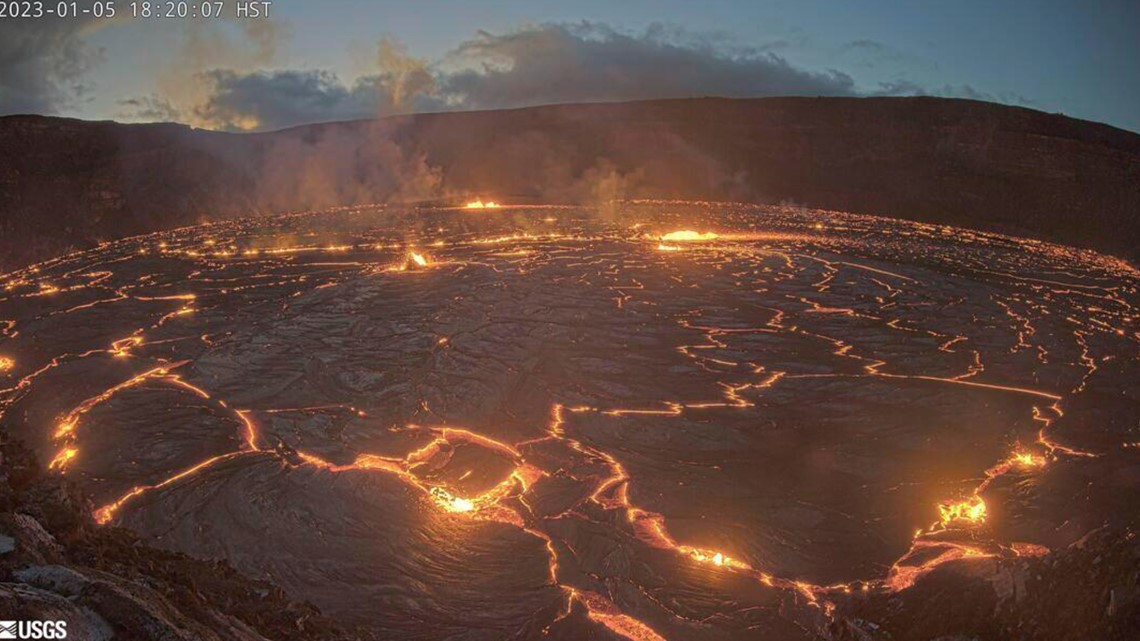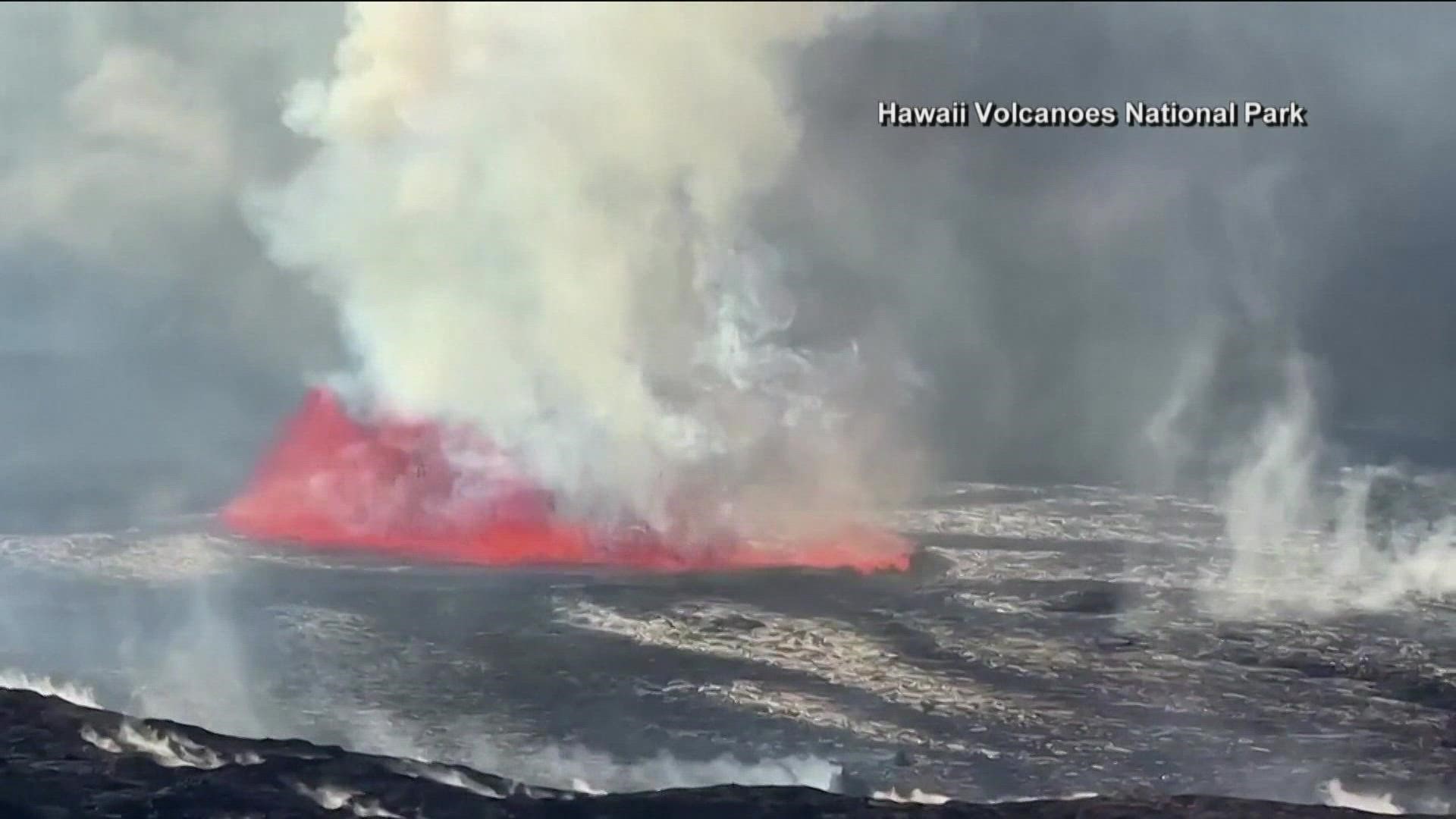HONOLULU — Hawaii's Kilauea, one of the world's most active volcanoes, is erupting again and providing a spectacle that includes bursting lava fountains and lava “waves,” but no Big Island communities are in danger.
Kilauea began erupting Thursday inside its summit crater, the U.S. Geological Survey said — less than one month after the volcano and its larger neighbor Mauna Loa stopped releasing lava. The Hawaiian Volcano Observatory detected a glow in webcam images indicating Kilauea had begun erupting inside Halemaumau crater at the volcano's summit caldera, the agency said.
Kilauea last erupted for 16 months starting in September 2021, and for about two weeks starting last November, Hawaii had two volcanoes spewing lava side by side when Mauna Loa erupted for the first time in 38 years.
The observatory on Thursday raised Kilauea's alert level, but on Friday morning lowered it from warning to watch “because the initial high effusion rates are declining, and no infrastructure is threatened.”
Kilauea’s summit is inside Hawaii Volcanoes National Park and away from residential communities.


The eruption is expected to remain in the summit, the observatory said Friday.
That's reassuring to Big Island Mayor Mitch Roth. “We’re feeling pretty good about where it’s at right now,” he said Friday.
The Big Island is familiar with the dangers of living with active volcanoes.
Mauna Loa lava got within 1.7 miles (2.7 kilometers) of a major highway connecting the east and west sides of the island when the volcano erupted in November. A 2018 Kilauea eruption destroyed more than 700 residences.
Both volcanoes stopped erupting at about the same time last month.
The volcanoes can be seen at the same time from multiple spots in Hawaii Volcanoes National Park near Kilauea’s caldera. During the twin eruption, visitors to Hawaii Volcanoes National Park were able to see lava from both events at the same time.
There is generally a three-month “cooling off” period before scientists consider an eruption to be complete.
Scientists planned to continue studying the relationship between the two volcanoes, but so far Mauna Loa remains quiet.
On Thursday night, lava from Kilauea shot as high as 164 feet (50 meters) into the air -- roughly as high as the width of a football field -- but most so-called “lava fountains” were smaller, at 32 feet (10 meters) high. By comparison, lava fountains from Mauna Loa’s eruption two months ago topped 200 feet (60 meters) in height.
As of 7:30 p.m. Thursday, new lava about 32 feet (10 meters) deep had been added to the crater floor, the observatory said.
The fountain heights were dramatically lower Friday, said Jody Anastasio, a spokesperson for the park.
"People who were lucky enough to see it yesterday afternoon into the evening got to see large fountains," she said Friday. “During the day it might be hard to see the active lava, but it's a good idea to bring binoculars. At night there will be a glow and all of our viewing areas are good for seeing the glow and the lava.”
For Native Hawaiians, volcanic eruptions have deep cultural and spiritual significance. During Mauna Loa’s eruption, many Hawaiians took part in cultural traditions, such as singing, chanting and dancing to honor Pele, the deity of volcanoes and fire, and leaving offerings known as “hookupu."
Kealoha Pisciotta, a cultural practitioner who lives on the slopes of Kilauea, encouraged Hawaiians in Hawaii and beyond to acknowledge akua — or gods and goddesses such as Pele, the deity of volcanoes and fire.
“Wherever you are, take time out today to reflect upon them and thank them for bringing new life and new land,” she said Friday.
HOW OFTEN HAS KILAUEA ERUPTED BEFORE?
Hawaiian chants and stories tell the stories of countless eruptions. In Hawaiian tradition, Kilauea is home to the volcano goddess Pele.
Kilauea has erupted more than 34 times since 1952. From 1983 to 2018, it erupted almost continuously, in some cases sending streams of lava that covered farms and homes. At the end of this decades-long eruption, Kilauea spewed lava from vents in a residential neighborhood on its eastern flank and destroyed more than 700 homes.

